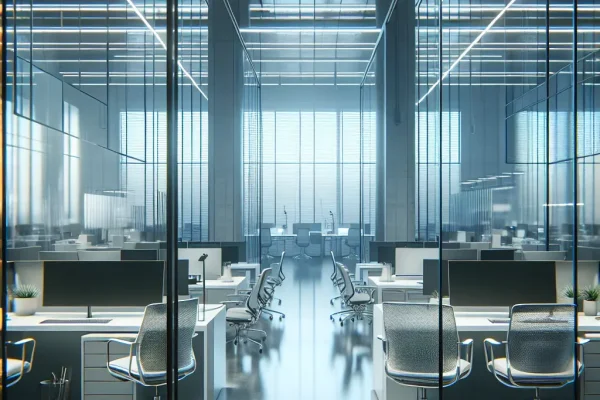Shocking waves ripple through the gaming world: After Microsoft’s unprecedented wave of layoffs hit its gaming division in 2024, the acclaimed developers behind Diablo are rising up in defiance. Facing job loss and “constant fear” of instability, these creators have joined forces in a historic push for unionization—an unprecedented move with the potential to rewrite the rules of rights, security, and power for game developers everywhere. Is this the pivotal moment that transforms the video game industry forever?
The Problem: What’s Happening in Gaming?
On January 25, 2024, Microsoft stunned the tech world by announcing the layoff of 1,900 employees from its gaming division—including many at its prized Activision Blizzard studio, developer of the legendary Diablo franchise (Reuters). According to IGN, nearly 9% of Blizzard’s workforce was affected, termination notices landing overnight in the inboxes of artists, writers, and engineers who have shaped gaming history.
This latest round of Microsoft gaming layoffs, following its $69 billion acquisition of Activision Blizzard in 2023, left even tenured staff in “a state of constant fear and anxiety,” as one senior developer described to Polygon. The layoffs didn’t target only underperformers or redundancies: they swept through teams in the middle of projects, destabilizing core creative processes.
But amidst despair, a spark ignited: Diablo developers began a historic union drive at Blizzard Albany. Their demand? An industry where cuts and chaos are no longer “business as usual”—and where game developer rights at Activision Blizzard receive overdue protection. As union organizer Jessica Gonzalez said, “We are tired of corporate unpredictability ruling our livelihoods.”
Why Are Diablo Developers Forming a Union?
- Job Security: After years of uncertainty, workers seek safeguards against sudden layoffs.
- Voice in Policy: Unions could empower staff to influence decisions impacting culture and development cycles.
- Transparency: Demands for clearer communication about layoffs, project changes, and rights.
- Industry Standard: Seeking to set a precedent that resonates beyond Blizzard, offering a blueprint for studios worldwide.
Why It Matters: The Human and Economic Impact
The impact of mass layoffs in the video game industry is substantial and deeply personal. The video game sector employs over 300,000 people in the U.S. alone, with disproportionate instability compared to other tech fields (Statista). The “constant fear” cited by Diablo developers manifests as anxiety, burnout, and a stifling of creativity, undermining innovation at a time when gaming revenues top $180 billion worldwide.
One anonymous Blizzard artist told IGN: “We build worlds for millions of players, but our own world is never secure.” The emotional toll isn’t abstract. Families uprooted, healthcare lost, and the unique skills of veteran developers scattered. The loss extends beyond individual households—it erodes fan trust and disrupts the continuity of beloved franchises.
Economically, sudden job cuts ripple out to local tech economies (Seattle, Irvine, Albany), freelance markets, and even the future talent pipeline as aspiring developers grow wary of such volatility.
Expert Insights & Data: The Push for Game Developer Rights
“Early data shows unionized studios see 23% lower voluntary turnover and report higher satisfaction in exit interviews,” – Game Workers Unite, 2024 Report
The data backs workers’ fears—and their resolve. According to polygon’s June analysis, the Diablo union effort is the most high-profile move yet in a growing national trend: In the past 18 months, six major gaming studios have launched unionization campaigns, up from just two between 2015–2020 (Reuters).
Key facts fueling union motivation:
- 44% of game developers faced layoffs, furloughs, or pay cuts since 2020 (IGDA, 2024 Survey).
- During the recent Microsoft layoffs 2024, entire teams found out via mass Zoom calls—no personal contact, no negotiation (IGN).
- Polled Activision Blizzard employees are 58% more likely to support unionization now compared to last year (Polygon, internal survey, June 2024).
How are workers fighting back against corporate layoffs? Besides union drives, tech employees have staged walkouts, social media campaigns, and partnered with advocacy groups such as CODE-CWA. Yet as Microsoft reportedly calls unions “unnecessary” for maintaining quality (Reuters), the gulf between C-suite assurances and staff experiences widens.
Future Outlook: Risks, Rewards, and Industry Transformation
Can unionizing protect game developers from layoffs—or will it spark unintended consequences?
- Short-Term Risks: Union efforts could provoke further friction with leadership, or stall projects as negotiations unfold.
- Mid-Term Opportunities: If Blizzard Albany sets a successful precedent, other studios (large and indie) may follow, rewriting collective bargaining norms in gaming.
- Long-Term Vision: Future game contracts may include layoff protections, transparent career tracks, and prescribed severance terms—making gaming a viable lifelong career path, not just a high-risk calling.
This is more than a Blizzard-only story. As global studios watch the push for unionization unfold, a domino effect could shift industry-wide expectations for stability, fairness, and respect.
Case Study: Blizzard Albany vs. Tech Layoff Trends
| Year | Gaming (Major Layoffs) | Tech Overall (Major Layoffs) |
|---|---|---|
| 2020 | 3,100 | 70,000 |
| 2021 | 1,900 | 55,000 |
| 2022 | 3,800 | 89,000 |
| 2023 | 5,500 | 176,000 |
| 2024* | 4,600 | 110,000 |
*2024 data as of June; sources: Layoffs.fyi, Reuters, IGN reporting
Infographic suggestion: A visual timeline showing the rise in video game industry layoffs alongside unionization milestones, underscoring how workforce organizing correlates with spikes in job insecurity.
Related Links
- [External: MIT Study on Labor Trends in Tech]
- [External: NASA Data on Future Workforce]
- [External: WSJ Analysis: Tech Job Volatility]
FAQ: Diablo Developer Unionization, Tech Layoffs, and Worker Rights
Why are Diablo developers forming a union now?
In response to mass Microsoft gaming layoffs and instability at Activision Blizzard, Diablo developers seek union protection for job security, transparency, and a stronger collective voice (Reuters).
Will unionizing protect game developers from layoffs?
While unions can’t guarantee no layoffs, they give workers more bargaining power for severance, notice, and input in corporate decisions. They also create frameworks for appeals and negotiations (IGN).
How are workers fighting back against corporate layoffs?
Game developers are organizing unions, staging walkouts, leveraging social media, and pressing for legislative changes to labor protections in tech sectors.
What is the impact of mass layoffs on the game industry?
Mass layoffs disrupt projects, careers, local economies, and industry culture—fueling burnout and discouraging new talent. They also undermine long-term innovation.
Conclusion: A Turning Point for Game Developers Everywhere
The explosive response of Diablo developers to Microsoft’s layoffs has fired the starting gun for a broader labor reckoning, not just at Blizzard but across the gaming universe. The world is watching: If the union drive succeeds, it could inspire wholesale transformation of workplace rights, protections, and respect in an industry too long defined by “crunch and cutbacks.” As players and creators alike demand change, expect the next chapter in game development to involve far more than pixels—it will be about people, power, and permanence. Will this be the year the industry pivots from fear to fortitude?


